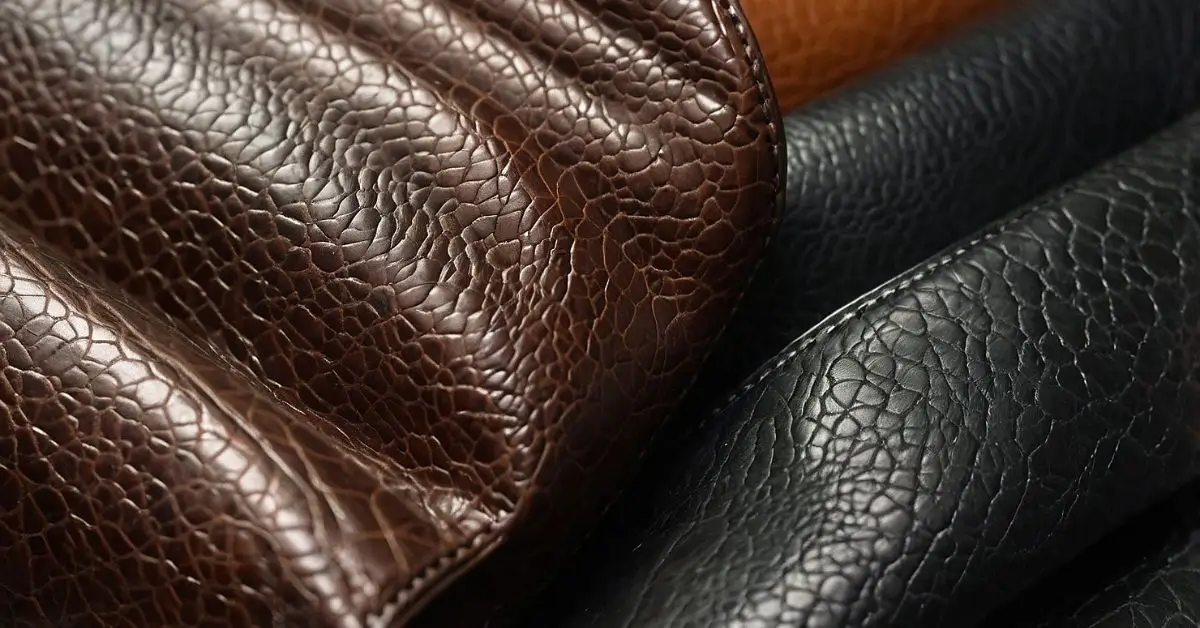Pleather, a synthetic alternative to leather, has become a popular choice for fashion and furniture due to its affordability, durability, and cruelty-free nature. However, like all materials, pleather requires proper care and maintenance to ensure its longevity and appearance. Whether you’re dealing with a pleather jacket, sofa, or bag, understanding how to clean pleather without causing damage is essential. This article will provide a detailed, step-by-step guide on how to clean and maintain pleather items to keep them looking fresh and new.
What is Pleather?
Pleather, also known as faux leather or synthetic leather, is a man-made material designed to mimic the look and feel of real leather. Pleather is often made from polyvinyl chloride (PVC) or polyurethane (PU), both of which are plastic-based materials. These synthetic materials are layered and textured to give pleather its characteristic leather-like appearance.
Pleather has gained popularity for various reasons, including:
- Affordability: It’s much cheaper than genuine leather.
- Cruelty-Free: Since it’s synthetic, no animals are harmed in its production.
- Durability: When properly cared for, pleather can last for many years.
- Water Resistance: Unlike real leather, pleather is resistant to water, making it easier to clean.
However, pleather doesn’t have the same natural qualities as genuine leather, and it requires specific cleaning and maintenance techniques to preserve its appearance.
Why is Cleaning Pleather Important?
Pleather, like any fabric or material, can accumulate dirt, grime, oils, and stains over time. While pleather is more resistant to certain elements than real leather, it can still crack, fade, or deteriorate if not properly maintained. Regular cleaning helps to:
- Maintain Appearance: Proper cleaning keeps pleather looking shiny and new.
- Prevent Cracks: Pleather can dry out and crack, especially in areas with frequent use.
- Prolong Longevity: Regular care extends the lifespan of your pleather items.
- Prevent Stains from Setting: Cleaning up spills quickly prevents permanent staining.
Basic Cleaning Techniques for Pleather
Tools and Products You’ll Need:
- Microfiber cloths
- Mild dish soap
- Warm water
- Soft sponge
- Cotton balls or swabs
- Baking soda
- White vinegar
- Rubbing alcohol (optional for stains)
Step-by-Step Cleaning Process:
- Dusting Off Surface Dirt: Start by dusting off any loose dirt or debris using a soft microfiber cloth. This prevents dirt from scratching the surface when cleaning.
- Create a Cleaning Solution: In a bowl, mix a few drops of mild dish soap with warm water. Avoid harsh chemicals or abrasive cleaners, as they can damage the pleather’s surface.
- Dampen a Sponge or Cloth: Dip a soft sponge or cloth into the soapy water and wring out the excess. The cloth should be damp, not soaking wet, to avoid saturating the pleather.
- Wipe the Surface: Gently wipe the pleather surface with the damp cloth, working in circular motions. Focus on areas with visible dirt or stains.
- Rinse and Repeat: Rinse the cloth with clean water and go over the pleather again to remove any soap residue.
- Dry the Pleather: Use a dry microfiber cloth to blot and dry the pleather. Avoid air drying, as water can leave marks if left on the surface.
How to Remove Stains from Pleather
Dealing with Oil Stains:
Oil stains can occur from skin contact or accidental spills. To clean oil stains from pleather:
- Sprinkle Baking Soda: Lightly sprinkle baking soda over the oil stain and let it sit for 10-15 minutes. The baking soda will absorb the oil.
- Wipe Off: After allowing the baking soda to sit, wipe it off with a clean, dry cloth. If necessary, follow up with a damp cloth to remove any residue.
Cleaning Ink Marks:
Ink marks can be tricky but are not impossible to remove from pleather:
- Use Rubbing Alcohol: Dampen a cotton swab with rubbing alcohol and gently dab the ink stain. Avoid rubbing harshly, as it can spread the ink.
- Blot with a Clean Cloth: Use a dry cloth to blot the area and remove the ink. Repeat the process if necessary.
Removing Water Spots:
Water spots can form when pleather is exposed to too much moisture:
- White Vinegar Solution: Mix equal parts of white vinegar and water. Dampen a cloth in the solution and lightly rub the water spots.
- Wipe and Dry: Once the spots are gone, wipe the area with a dry cloth.
Deep Cleaning Pleather
When and Why to Deep Clean:
Deep cleaning pleather should be done every few months or when the item has accumulated significant dirt and stains. Deep cleaning ensures that embedded grime is removed, restoring the pleather’s original appearance.
Deep Cleaning Techniques:
- Vacuum First: If you’re cleaning pleather furniture, start by vacuuming any dust or debris from crevices and seams.
- Use a Mild Cleaner: For deep cleaning, use a mild, non-abrasive cleaner designed for synthetic leather. Apply it with a soft cloth or sponge.
- Scrub Gently: Work the cleaner into the pleather using gentle, circular motions. Avoid harsh scrubbing to prevent damage.
- Rinse Thoroughly: Once the cleaning is complete, wipe down the pleather with a damp cloth to remove any cleaner residue.
- Dry Completely: Use a dry cloth to thoroughly dry the surface, ensuring no moisture is left behind.
Conditioning Pleather to Prevent Cracks
While pleather doesn’t need conditioning like real leather, it can still benefit from a moisturizing treatment to prevent cracks and dryness. To condition pleather:
- Apply a Small Amount of Mineral Oil or Baby Oil: Use a soft cloth to apply a small amount of oil to the pleather surface. Be careful not to oversaturate.
- Buff the Surface: After applying the oil, use a clean cloth to buff the surface, giving it a natural shine.
- Avoid Silicone-Based Conditioners: Some conditioners contain silicone, which can cause the pleather to deteriorate over time.
How to Clean Pleather Furniture
Pleather furniture, such as sofas and chairs, requires special care due to frequent use. Here’s how to clean and maintain pleather furniture:
Cleaning Pleather Sofas and Chairs:
- Vacuum: Start by vacuuming the furniture, paying attention to seams and crevices.
- Spot Clean: If there are stains, use the methods described earlier to spot-clean specific areas.
- Wipe Down: Use a damp cloth and mild soap to wipe down the entire surface.
- Condition: After cleaning, condition the pleather with mineral oil to prevent cracking.
Maintaining Pleather Furniture:
- Avoid Direct Sunlight: Prolonged exposure to sunlight can cause pleather to fade and crack.
- Clean Spills Immediately: Address spills as soon as they happen to prevent staining.
- Rotate Cushions: If your furniture has removable cushions, rotate them regularly to distribute wear evenly.
How to Clean Pleather Apparel and Accessories
Jackets and Pants:
Pleather jackets and pants require careful cleaning to avoid damage:
- Spot Clean First: Always spot-clean any stains before doing a full wipe-down.
- Use a Damp Cloth: Wipe down the garment with a cloth dampened in soapy water, paying attention to areas like the cuffs, collar, and pockets.
- Hang Dry: After cleaning, hang the item to air-dry, avoiding direct sunlight.
Bags and Shoes:
Pleather bags and shoes can be cleaned using similar methods:
- Wipe the Surface: Use a damp cloth and mild soap to wipe the surface.
- Stuff Bags: After cleaning bags, stuff them with paper or towels to help maintain their shape as they dry.
- Polish Shoes: After cleaning shoes, buff them with a soft cloth to restore shine.
Common Mistakes to Avoid When Cleaning Pleather
- Avoid Harsh Chemicals: Bleach, ammonia, and other harsh chemicals can cause pleather to crack and peel.
- Don’t Use Abrasive Brushes: These can scratch the surface of pleather.
- Don’t Saturate the Material: Too much moisture can cause pleather to warp or crack.
- Don’t Skip Conditioning: Regular conditioning helps prevent cracks and dryness.
Conclusion
Cleaning pleather is a straightforward process, but it requires attention to detail and the right techniques to ensure the material remains in top condition. By following these cleaning and maintenance tips, you can extend the life of your pleather items, keeping them looking fresh and vibrant for years to come. Regular cleaning, spot treatments, and occasional deep cleaning will ensure your pleather furniture, clothing, and accessories continue to shine, while avoiding cracks and other damage that can occur over time.











